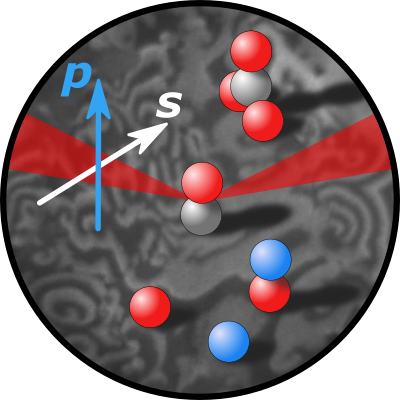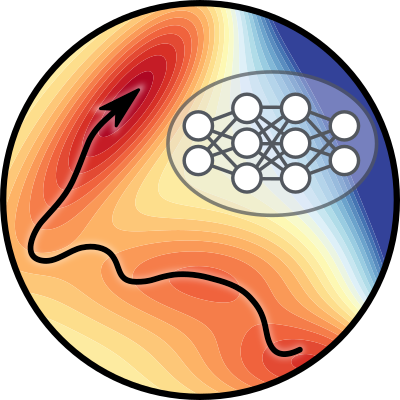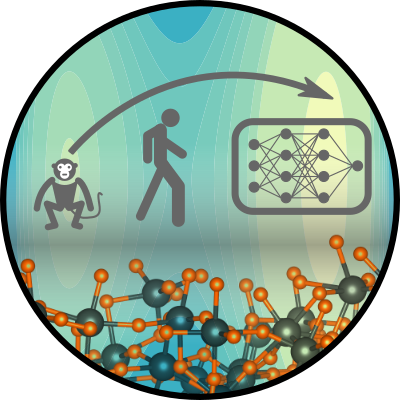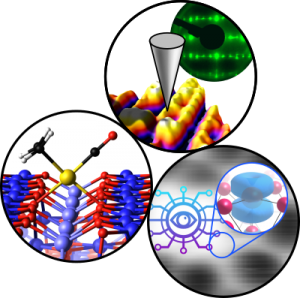Publications
2023

Asencios, Yvan J. O.; Yigit, Nevzat; Wicht, Thomas; Stöger-Pollach, Michael; Lucrédio, Alessandra F.; Marcos, Francielle C. F.; Assaf, Elisabete M.; Rupprechter, Günther
Partial Oxidation of Bio-methane over Nickel Supported on MgO–ZrO2 Solid Solutions
Journal ArticleOpen AccessIn: Topics in Catalysis, vol. 66, pp. 1539–1552, 2023.
Abstract | Links | BibTeX | Tags: P08
@article{Asencios2023,
title = {Partial Oxidation of Bio-methane over Nickel Supported on MgO–ZrO_{2} Solid Solutions},
author = {Yvan J. O. Asencios and Nevzat Yigit and Thomas Wicht and Michael Stöger-Pollach and Alessandra F. Lucrédio and Francielle C. F. Marcos and Elisabete M. Assaf and Günther Rupprechter},
doi = {10.1007/s11244-023-01822-7},
year = {2023},
date = {2023-05-24},
urldate = {2023-05-24},
journal = {Topics in Catalysis},
volume = {66},
pages = {1539--1552},
publisher = {Springer Science and Business Media LLC},
abstract = {Syngas can be produced from biomethane via Partial Oxidation of Methane (POM), being an attractive route since it is ecofriendly and sustainable. In this work, catalysts of Ni supported on MgO–ZrO_{2} solid solutions, prepared by a one-step polymerization method, were characterized by HRTEM/EDX, XRD, XPS, H_{2}-TPR, and in situ XRD. All catalysts, including Ni/ZrO_{2} and Ni/MgO as reference, were tested for POM (CH_{4}:O_{2} molar ratio 2, 750 ºC, 1 atm). NiO/MgO/ZrO_{2} contained two solid-solutions, MgO–ZrO2 and NiO-MgO, as revealed by XRD and XPS. Ni (30 wt%) supported on MgO–ZrO_{2} solid solution exhibited high methane conversion and hydrogen selectivity. However, depending on the MgO amount (0, 4, 20, 40, 100 molar percent) major differences in NiO reducibility, growth of Ni^{0} crystallite size during H_{2} reduction and POM, and in carbon deposition rates were observed. Interestingly, catalysts with lower MgO content achieved the highest CH_{4} conversion (~ 95%), high selectivity to H_{2} (1.7) and CO (0.8), and low carbon deposition rates (0.024 g_{carbon} g_{cat}^{−1} h^{−1}) with Ni_{4}MgZr (4 mol% MgO) turning out to be the best catalyst. In situ XRD during POM indicated metallic Ni nanoparticles (average crystallite size of 31 nm), supported by MgO–ZrO_{2} solid solution, with small amounts of NiO–MgO being present as well. The presence of MgO also influenced the morphology of the carbon deposits, leading to filaments instead of amorphous carbon. A combustion-reforming mechanism is suggested and using a MgO–ZrO_{2} solid solution support strongly improves catalytic performance, which is attributed to effective O_{2}, CO_{2} and H_{2}O activation at the Ni/MgO–ZrO_{2} interface.},
keywords = {P08},
pubstate = {published},
tppubtype = {article}
}

Hijes, Pablo Montero; Romano, Salvatore; Gorfer, Alexander; Dellago, Christoph
The kinetics of the ice–water interface from ab initio machine learning simulations
Journal ArticleOpen AccessIn: The Journal of Chemical Physics, vol. 158, no. 204706, 2023.
Abstract | Links | BibTeX | Tags: P12
@article{Hijes2023a,
title = {The kinetics of the ice–water interface from \textit{ab initio} machine learning simulations},
author = {Pablo Montero Hijes and Salvatore Romano and Alexander Gorfer and Christoph Dellago},
doi = {10.1063/5.0151011},
year = {2023},
date = {2023-05-24},
urldate = {2023-05-24},
journal = {The Journal of Chemical Physics},
volume = {158},
number = {204706},
publisher = {AIP Publishing},
abstract = {Molecular simulations employing empirical force fields have provided valuable knowledge about the ice growth process in the past decade. The development of novel computational techniques allows us to study this process, which requires long simulations of relatively large systems, with ab initio accuracy. In this work, we use a neural-network potential for water trained on the revised Perdew–Burke–Ernzerhof functional to describe the kinetics of the ice–water interface. We study both ice melting and growth processes. Our results for the ice growth rate are in reasonable agreement with previous experiments and simulations. We find that the kinetics of ice melting presents a different behavior (monotonic) than that of ice growth (non-monotonic). In particular, a maximum ice growth rate of 6.5 Å/ns is found at 14 K of supercooling. The effect of the surface structure is explored by investigating the basal and primary and secondary prismatic facets. We use the Wilson–Frenkel relation to explain these results in terms of the mobility of molecules and the thermodynamic driving force. Moreover, we study the effect of pressure by complementing the standard isobar with simulations at a negative pressure (−1000 bar) and at a high pressure (2000 bar). We find that prismatic facets grow faster than the basal one and that pressure does not play an important role when the speed of the interface is considered as a function of the difference between the melting temperature and the actual one, i.e., to the degree of either supercooling or overheating.},
keywords = {P12},
pubstate = {published},
tppubtype = {article}
}
Winkler, Philipp; Raab, Maximilian; Zeininger, Johannes; Rois, Lea M.; Suchorski, Yuri; Stöger-Pollach, Michael; Amati, Matteo; Parmar, Rahul; Gregoratti, Luca; Rupprechter, Günther
Journal ArticleOpen AccessIn: ACS Catalysis, vol. 13, no. 11, pp. 7650–7660, 2023.
Abstract | Links | BibTeX | Tags: P08
@article{doi:10.1021/acscatal.3c00060,
title = {Imaging Interface and Particle Size Effects by In Situ Correlative Microscopy of a Catalytic Reaction},
author = {Philipp Winkler and Maximilian Raab and Johannes Zeininger and Lea M. Rois and Yuri Suchorski and Michael Stöger-Pollach and Matteo Amati and Rahul Parmar and Luca Gregoratti and Günther Rupprechter},
doi = {10.1021/acscatal.3c00060},
year = {2023},
date = {2023-05-23},
urldate = {2023-01-01},
journal = {ACS Catalysis},
volume = {13},
number = {11},
pages = {7650--7660},
abstract = {The catalytic behavior of Rh particles supported by three different materials (Rh, Au, and ZrO_{2_{) in H_{2_{ oxidation has been studied in situ by correlative photoemission electron microscopy (PEEM) and scanning photoemission electron microscopy (SPEM). Kinetic transitions between the inactive and active steady states were monitored, and self-sustaining oscillations on supported Rh particles were observed. Catalytic performance differed depending on the support and Rh particle size. Oscillations varied from particle size-independent (Rh/Rh) via size-dependent (Rh/ZrO_{2_{) to fully inhibited (Rh/Au). For Rh/Au, the formation of a surface alloy induced such effects, whereas for Rh/ZrO_{2_{, the formation of substoichiometric Zr oxides on the Rh surface, enhanced oxygen bonding, Rh-oxidation, and hydrogen spillover onto the ZrO_{2_{ support were held responsible. The experimental observations were complemented by micro-kinetic simulations, based on variations of hydrogen adsorption and oxygen binding. The results demonstrate how correlative in situ surface microscopy enables linking of the local structure, composition, and catalytic performance.},
keywords = {P08},
pubstate = {published},
tppubtype = {article}
}

Carrete, Jesús; Montes-Campos, Hadrián; Wanzenböck, Ralf; Heid, Esther; Madsen, Georg K. H.
Journal ArticleOpen AccessIn: The Journal of Chemical Physics, vol. 158, no. 20, pp. 204801-1–204801-18, 2023.
Abstract | Links | BibTeX | Tags: P09
@article{Carrete2023,
title = {Deep ensembles vs committees for uncertainty estimation in neural-network force fields: Comparison and application to active learning},
author = {Jesús Carrete and Hadrián Montes-Campos and Ralf Wanzenböck and Esther Heid and Georg K. H. Madsen},
doi = {10.1063/5.0146905},
year = {2023},
date = {2023-05-22},
journal = {The Journal of Chemical Physics},
volume = {158},
number = {20},
pages = {204801-1--204801-18},
publisher = {AIP Publishing},
abstract = {A reliable uncertainty estimator is a key ingredient in the successful use of machine-learning force fields for predictive calculations. Important considerations are correlation with error, overhead during training and inference, and efficient workflows to systematically improve the force field. However, in the case of neural-network force fields, simple committees are often the only option considered due to their easy implementation. Here, we present a generalization of the deep-ensemble design based on multiheaded neural networks and a heteroscedastic loss. It can efficiently deal with uncertainties in both energy and forces and take sources of aleatoric uncertainty affecting the training data into account. We compare uncertainty metrics based on deep ensembles, committees, and bootstrap-aggregation ensembles using data for an ionic liquid and a perovskite surface. We demonstrate an adversarial approach to active learning to efficiently and progressively refine the force fields. That active learning workflow is realistically possible thanks to exceptionally fast training enabled by residual learning and a nonlinear learned optimizer.},
keywords = {P09},
pubstate = {published},
tppubtype = {article}
}

Bichelmaier, Sebastian; Carrete, Jesús; Wanzenböck, Ralf; Buchner, Florian; Madsen, Georg K. H.
Neural-network-backed effective harmonic potential study of the ambient pressure phases of hafnia
Journal ArticleIn: Physical Review B, vol. 107, no. 184111, 2023, ISSN: 2469-9969.
Abstract | Links | BibTeX | Tags: P09
@article{Bichelmaier2023,
title = {Neural-network-backed effective harmonic potential study of the ambient pressure phases of hafnia},
author = {Sebastian Bichelmaier and Jesús Carrete and Ralf Wanzenböck and Florian Buchner and Georg K. H. Madsen},
doi = {10.1103/physrevb.107.184111},
issn = {2469-9969},
year = {2023},
date = {2023-05-17},
urldate = {2023-05-17},
journal = {Physical Review B},
volume = {107},
number = {184111},
publisher = {American Physical Society (APS)},
abstract = {Phonon-based approaches and molecular dynamics are widely established methods for gaining access to a temperature-dependent description of material properties. However, when a compound's phase space is vast, density-functional-theory-backed studies quickly reach prohibitive levels of computational expense. Here, we explore the complex phase structure of HfO_{2} using effective harmonic potentials based on a neural-network force field (NNFF) as a surrogate model. We detail the data acquisition and training strategy that enable the NNFF to provide almost ab-initio accuracy at a significantly reduced cost and present a recipe for automation. We demonstrate how the NNFF can generalize beyond its training data and that it is transferable between several phases of hafnia. We find that the thermal expansion coefficient of the low-symmetry phases agrees well with experimental results, and we determine the P¯43m phase to be the favorable (stoichiometric) cubic phase over the established Fm¯3m. In contrast, the experimental lattice constants of the cubic phases are substantially larger than what is calculated for the corresponding stoichiometric phases. Furthermore, we show that the stoichiometric cubic phases are unlikely to be thermodynamically stable compared to the tetragonal and monoclinic phases and hypothesize that they exist only in defect-stabilized forms.},
keywords = {P09},
pubstate = {published},
tppubtype = {article}
}

Jung, Hendrik; Covino, Roberto; Arjun, A.; Leitold, Christian; Dellago, Christoph; Bolhuis, Peter G.; Hummer, Gerhard
Machine-guided path sampling to discover mechanisms of molecular self-organization
Journal ArticleOpen AccessIn: Nature Computational Science, vol. 3, pp. 334–345, 2023.
Abstract | Links | BibTeX | Tags: P12
@article{Jung2023,
title = {Machine-guided path sampling to discover mechanisms of molecular self-organization},
author = {Hendrik Jung and Roberto Covino and A. Arjun and Christian Leitold and Christoph Dellago and Peter G. Bolhuis and Gerhard Hummer},
doi = {10.1038/s43588-023-00428-z},
year = {2023},
date = {2023-04-24},
urldate = {2023-04-24},
journal = {Nature Computational Science},
volume = {3},
pages = {334--345},
publisher = {Springer Science and Business Media LLC},
abstract = {Molecular self-organization driven by concerted many-body interactions produces the ordered structures that define both inanimate and living matter. Here we present an autonomous path sampling algorithm that integrates deep learning and transition path theory to discover the mechanism of molecular self-organization phenomena. The algorithm uses the outcome of newly initiated trajectories to construct, validate and—if needed—update quantitative mechanistic models. Closing the learning cycle, the models guide the sampling to enhance the sampling of rare assembly events. Symbolic regression condenses the learned mechanism into a human-interpretable form in terms of relevant physical observables. Applied to ion association in solution, gas-hydrate crystal formation, polymer folding and membrane-protein assembly, we capture the many-body solvent motions governing the assembly process, identify the variables of classical nucleation theory, uncover the folding mechanism at different levels of resolution and reveal competing assembly pathways. The mechanistic descriptions are transferable across thermodynamic states and chemical space.},
keywords = {P12},
pubstate = {published},
tppubtype = {article}
}

Latschka, Markus; Wellscheid, Björn; Rameshan, Raffael; Schöberl, Tobias; Essmeister, Johannes; Pacholik, Gernot; Valentini, Francesco; Balta, Laura; Limbeck, Andreas; Kählig, Hanspeter; Föttinger, Karin
Influence of hot liquid flowing water on Zeolite Y stability
Journal ArticleOpen AccessIn: Microporous and Mesoporous Materials, vol. 354, no. 112557, 2023.
Abstract | Links | BibTeX | Tags: P10
@article{Latschka2023,
title = {Influence of hot liquid flowing water on Zeolite Y stability},
author = {Markus Latschka and Björn Wellscheid and Raffael Rameshan and Tobias Schöberl and Johannes Essmeister and Gernot Pacholik and Francesco Valentini and Laura Balta and Andreas Limbeck and Hanspeter Kählig and Karin Föttinger},
doi = {10.1016/j.micromeso.2023.112557},
year = {2023},
date = {2023-04-15},
urldate = {2023-04-15},
journal = {Microporous and Mesoporous Materials},
volume = {354},
number = {112557},
abstract = {Zeolite Y is used in a wide field of catalysis because of its high surface area and strong acidity. Since flowing water is present in many catalytic liquid phase reactions, its impact was investigated. For that, the zeolite Y was treated with water at 200 °C and 42 bar in a flow reactor. The resulting characterization showed strong structural changes at high water flows. The typical zeolite structure was almost completely lost, but an amorphous phase similar to the faujasite framework was formed. Due to this, the characteristic micropores were destroyed (d = 0.7 nm, volume was reduced from 0.18 to 0.01 cm³/g) and small mesopores were created (d = 2–3 nm, volume was increased from 0.25 to 0.51 cm³/g). As a result, the specific surface area was not greatly reduced and was still at around 250 m²/g. In addition, the amount of octahedrally coordinated EFAl increased from 54 to 70% and a γ-Al_{2}O_{3} as well as a kaolinite phase was observed. The formed tetrahedrally coordinated EFAl is responsible for EFAl-OH groups, which are strong Brønsted acid sites. In general, the total acid sites of the zeolite Y were not strongly reduced and the ratio of Lewis to Brønsted acid sites slightly increased from 70:30% to 80:20%. For all Al species, the oxygen coordination was strongly distorted. After water treatment, on Si a large number of coordinated OSi and OAl groups were substituted with OH groups. The ratio of Si to Al decreased from 1 to 0.7, because Si was dissolved out of the zeolite by the water. On the surface, it was vice versa, there the Si accumulated (the Si/Al ratio increased from 0.2 to 0.8), presumably as silica gel.},
keywords = {P10},
pubstate = {published},
tppubtype = {article}
}

Redondo, Jesus; Reticcioli, Michele; Gabriel, Vit; Wrana, Dominik; Ellinger, Florian; Riva, Michele; Franceschi, Giada; Rheinfrank, Erik; Sokolovic, Igor; Jakub, Zdenek; Kraushofer, Florian; Alexander, Aji; Patera, Laerte L.; Repp, Jascha; Schmid, Michael; Diebold, Ulrike; Parkinson, Gareth S.; Franchini, Cesare; Kocan, Pavel; Setvin, Martin
Real-space investigation of polarons in hematite Fe2O3
Journal ArticleSubmittedarXivIn: arXiv, 2023.
Abstract | Links | BibTeX | Tags: P02, P04, P07
@article{Redondo2024,
title = {Real-space investigation of polarons in hematite Fe2O3},
author = {Jesus Redondo and Michele Reticcioli and Vit Gabriel and Dominik Wrana and Florian Ellinger and Michele Riva and Giada Franceschi and Erik Rheinfrank and Igor Sokolovic and Zdenek Jakub and Florian Kraushofer and Aji Alexander and Laerte L. Patera and Jascha Repp and Michael Schmid and Ulrike Diebold and Gareth S. Parkinson and Cesare Franchini and Pavel Kocan and Martin Setvin},
url = {https://arxiv.org/abs/2303.17945},
year = {2023},
date = {2023-03-31},
urldate = {2023-03-31},
journal = {arXiv},
abstract = {In polarizable materials, electronic charge carriers interact with the surrounding ions, leading to quasiparticle behaviour. The resulting polarons play a central role in many materials properties including electrical transport, optical properties, surface reactivity and magnetoresistance, and polaron properties are typically investigated indirectly through such macroscopic characteristics. Here, noncontact atomic force microscopy (nc-AFM) is used to directly image polarons in Fe_{2}O_{3} at the single quasiparticle limit. A combination of Kelvin probe force microscopy (KPFM) and kinetic Monte Carlo (KMC) simulations shows that Ti doping dramatically enhances the mobility of electron polarons, and density functional theory (DFT) calculations indicate that a metallic transition state is responsible for the enhancement. In contrast, hole polarons are significantly less mobile and their hopping is hampered further by the introduction of trapping centres.},
keywords = {P02, P04, P07},
pubstate = {published},
tppubtype = {article}
}

Kraushofer, Florian; Meier, Matthias; Jakub, Zdeněk; Hütner, Johanna; Balajka, Jan; Hulva, Jan; Schmid, Michael; Franchini, Cesare; Diebold, Ulrike; Parkinson, Gareth S.
Oxygen-Terminated (1 × 1) Reconstruction of Reduced Magnetite Fe3O4(111)
Journal ArticleOpen AccessIn: vol. 14, no. 13, pp. 3258–3265, 2023.
Abstract | Links | BibTeX | Tags: P02, P04, P07
@article{Kraushofer2023,
title = {Oxygen-Terminated (1 × 1) Reconstruction of Reduced Magnetite Fe_{3}O_{4}(111)},
author = {Florian Kraushofer and Matthias Meier and Zdeněk Jakub and Johanna Hütner and Jan Balajka and Jan Hulva and Michael Schmid and Cesare Franchini and Ulrike Diebold and Gareth S. Parkinson},
doi = {10.1021/acs.jpclett.3c00281},
year = {2023},
date = {2023-03-28},
urldate = {2023-03-28},
volume = {14},
number = {13},
pages = {3258--3265},
publisher = {American Chemical Society (ACS)},
abstract = {The (111) facet of magnetite (Fe_{3}O_{4}) has been studied extensively by experimental and theoretical methods, but controversy remains regarding the structure of its low-energy surface terminations. Using density functional theory (DFT) computations, we demonstrate three reconstructions that are more favorable than the accepted Feoct2 termination under reducing conditions. All three structures change the coordination of iron in the kagome Feoct1 layer to be tetrahedral. With atomically resolved microscopy techniques, we show that the termination that coexists with the Fetet1 termination consists of tetrahedral iron capped by 3-fold coordinated oxygen atoms. This structure explains the inert nature of the reduced patches.},
keywords = {P02, P04, P07},
pubstate = {published},
tppubtype = {article}
}

Hijes, Pablo Montero; Espinosa, Jorge R; Vega, Carlos; Dellago, Christoph
Minimum in the pressure dependence of the interfacial free energy between ice Ih and water
Journal ArticleOpen AccessIn: The Journal of Chemical Physics, vol. 158, no. 12, pp. 124503, 2023.
Abstract | Links | BibTeX | Tags: P12
@article{Hijes2023,
title = {Minimum in the pressure dependence of the interfacial free energy between ice Ih and water},
author = {Pablo Montero Hijes and Jorge R Espinosa and Carlos Vega and Christoph Dellago},
doi = {10.1063/5.0140814},
year = {2023},
date = {2023-03-23},
urldate = {2023-03-23},
journal = {The Journal of Chemical Physics},
volume = {158},
number = {12},
pages = {124503},
publisher = {AIP Publishing},
abstract = {Despite the importance of ice nucleation, this process has been barely explored at negative pressures. Here, we study homogeneous ice nucleation in stretched water by means of molecular dynamics seeding simulations using the TIP4P/Ice model. We observe that the critical nucleus size, interfacial free energy, free energy barrier, and nucleation rate barely change between isobars from −2600 to 500 bars when they are represented as a function of supercooling. This allows us to identify universal empirical expressions for homogeneous ice nucleation in the pressure range from −2600 to 500 bars. We show that this universal behavior arises from the pressure dependence of the interfacial free energy, which we compute by means of the mold integration technique, finding a shallow minimum around −2000 bars. Likewise, we show that the change in the interfacial free energy with pressure is proportional to the excess entropy and the slope of the melting line, exhibiting in the latter a reentrant behavior also at the same negative pressure. Finally, we estimate the excess internal energy and the excess entropy of the ice Ih–water interface.},
keywords = {P12},
pubstate = {published},
tppubtype = {article}
}
